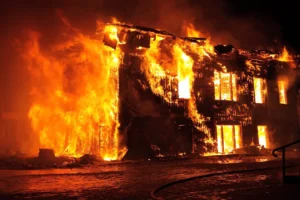Dallas doesn’t ease into spring. It arrives all at once—thunder, heat, wind gusts, and hailstones that can hit harder than gravel shot from a slingshot. And every year, the same cycle begins: storm season ramps up, roofs take hits, and roof damage claims surge across the metroplex. Some homeowners get their repairs approved quickly. Others face delays, denials, and back-and-forth disputes with insurance carriers.
At TX Insurance Appraiser, we sit right in the middle of this storm-driven claims cycle. We’ve watched these patterns repeat across Dallas, Fort Worth, Plano, Frisco, Irving, and the broader North Texas region. The claims process becomes more complicated during peak weather months—not just because more roofs get damaged, but because timing, documentation, inspection quality, and claim strategy matter more than homeowners realize.
This article breaks down exactly what happens during peak storm season, why appraisals increase so sharply, and what actually helps strengthen your case if you file roof damage claims during hail or wind season.
Let’s dig in.
Dallas Weather: A Perfect Recipe for Roof Stress
Dallas sits in what meteorologists call the “Hail Belt.” It’s a region stretching through North Texas, Oklahoma, and the High Plains that experiences more hailstorms than nearly anywhere else in the United States.
- Hail season: March through June
- Highest frequency: Late April to early June
- Peak storm development: Afternoons and evenings
According to the National Weather Service, the Dallas area experiences dozens of hail events each year, with hailstones sometimes exceeding 2 inches in diameter. For reference, hail that size can fracture shingles, dent metal vents, and even crack skylight glass.
Wind adds another layer of trouble. Wind gusts during spring storms in Dallas frequently exceed 50–70 mph, enough to:
- Lift shingles from the deck
- Break adhesive seals
- Displace ridge caps
- Rip flashing loose
These damages often don’t leak immediately. The roof may look fine from the street. But micro-tears grow. Water intrusion develops over weeks or months. And by the time the homeowner notices staining in a bedroom ceiling, the damage has escalated.
This delayed reveal is one major reason roof damage claims spike after, not just during, storm season.
When Storm Season Peaks, Claims Spike Right Behind It
Right after a storm, the neighborhood wakes up and looks around. Roofers appear. Insurance adjusters schedule drive-through assessments. And suddenly:
- Everyone is filing claims at once.
- Contractor calendars book out for weeks.
- Adjuster availability stretches thin.
- Temporary tarps and patch jobs become the norm.
It’s not that storms themselves are rare. It’s how many homeowners file roof claims in the same compressed time window that matters.
Here’s how the timeline usually unfolds:
| Time After Storm | What Happens | Impact on Homeowners |
| 24 hours | Roofers canvass neighborhoods | Homeowners pressured into signing agreements |
| 3 days | Adjuster requests surge | Longer wait times for inspection appointments |
| 1–2 weeks | Material suppliers raise prices statewide | Roof replacement costs increase |
| 1–3 months | Insurance claim approvals/denials begin | Some claims stall or get underpaid |
| 6+ months | Hidden leaks appear | Secondary damage claims become harder to prove |
This compression is why appraisals spike during hail season. When claim decisions become rushed or inconsistent, more homeowners need third-party evaluation to challenge or negotiate the results.
At TX Insurance Appraiser, we see roof damage claims triple between April and June each year.
What Storm Damage Looks Like on Dallas Roofs
Roof damage doesn’t always present as a hole or missing shingle. Most damage is subtle at first—measurable only when inspected closely by touch, light, and chalk-mark imaging.
Hail Damage Signs
- Granule loss exposing the asphalt layer
- Soft bruising in shingles detectable by pressure
- Cracked mats (the internal structure of the shingle)
- Dented flashing, gutters, or ridge vents
Even small hail can cause long-term degradation. The shingle might stay physically intact but loses UV protection, causing faster aging and premature failure.
Wind Damage Signs
- Creased shingles (the tell-tale hinge line)
- Lifted shingles where adhesive seals have popped
- Displaced ridge caps
- Gaps in flashing around chimneys and vents
Wind damage is often invisible from the ground. By the time leaks appear, the underlying decking may already be compromised.
Hidden Water Intrusion
- Attic discoloration or moisture streaks
- Soft drywall or bubbling paint
- Musty air near ceiling fixtures
- Mold growth in insulation
Storm season often causes this damage, but the leak doesn’t show until months later. Insurance companies sometimes deny claims claiming “late reporting.” Documentation solves this.
How Insurance Companies Evaluate (and Often Dispute) Roof Claims
Insurance carriers do not approve roof damage claims simply because storm weather occurred. They require:
- Proof of functional (not cosmetic) damage
- Verification that damage occurred during the policy period
- Evidence that damage was not caused by age, neglect, or installation issues
Adjusters are trained to look for:
- Bruising patterns aligned with hail impact
- Uplift resistance failure for wind claims
- Collateral damage that correlates with storm direction
But here’s the complication:
Peak storm season rushes adjusters. And rushed inspections often miss damage.
Sometimes adjusters use drones only. Sometimes they inspect from the ground. Other times they inspect only one slope and declare the roof undamaged. These inconsistencies are exactly why the appraisal process exists.
What Actually Strengthens a Roof Damage Claim
Most homeowners assume photos of a damaged shingle are enough. In reality, insurers look for proof consistency more than proof volume. You want documentation that builds a clear, time-stamped timeline.
Key Evidence Homeowners Should Gather
| Evidence Type | Why It Matters | How to Capture It |
| Pre-storm roof photos | Establishes baseline condition | Take yearly photos, especially before spring |
| NOAA storm verification | Links damage to a documented storm event | Download local hail history |
| Professional roof inspection report | Provides expert damage analysis | Use a licensed, insurance-trained roofer or appraiser |
| Interior leak documentation | Shows functional damage progression | Photograph staining at multiple dates |
| Maintenance records | Proves roof was not neglected | Save invoices for gutter cleaning / repairs |
Government storm event data can be pulled directly from NOAA.
We attach this documentation to many client files. It’s an objective, third-party record that insurance companies cannot easily dispute.
Common Claim Obstacles and How to Navigate Them
Here are the most common reasons we see roof damage claims get delayed or denied:
“Wear and tear” argument
Carrier claims the damage was pre-existing or simply aging.
Response Strategy: Present before-and-after photo history combined with storm event verification.
“Cosmetic damage only”
The insurer argues the damage does not affect roof function.
Response Strategy: Highlight bruised shingles, cracked mats, or attic moisture signs that show functional impairment.
Drive-by inspections
Adjuster never gets onto the roof.
Response Strategy: Request re-inspection in writing. Homeowners have the right.
Disagreement on scope of damage or replacement needs
One party says repair; the other says full replacement is required.
Response Strategy: Appraisal process (this is where TX Insurance Appraiser comes in).
The Appraisal Clause: Your Most Important Claim Tool
When a homeowner and insurance carrier disagree on the claim value or scope, the appraisal clause can be invoked. This is not litigation. It is a contractual dispute resolution method included in many Texas policies.
Here’s how it works:
- You appoint an appraiser (example: TX Insurance Appraiser).
- The insurance company appoints their appraiser.
- If those two cannot agree, a neutral umpire is chosen.
- The final scope and cost determination becomes binding.
When Appraisal Helps
- Adjuster missed damage or undermeasured slopes
- Damage was underestimated or underpaid
- Contractor pricing disputes arise
When Appraisal May Not Help
- There is no functional damage
- Policy excludes certain storm types
- Claim was filed well outside reporting window
We help homeowners evaluate whether appraisal is worth pursuing based on evidence, roof age, and policy terms.
Choosing the Right Roofing Contractor Matters (A Lot)
After storms, Dallas sees an influx of storm-chaser crews—temporary contractors from out of state. Some are legitimate. Many are not.
Look for This
- Local business address
- Insurance and licensing in Texas
- Detailed inspection photos and slope-by-slope assessment
- Willingness to coordinate with your appraiser—not replace your representation
Avoid This
- “We’ll cover your deductible.” (Illegal in Texas under House Bill 2102)
- High-pressure sales tactics
- Asking you to sign anything before the inspection
Your contractor should support your claim—not control it.
Preparing Your Roof and Policy Before Storm Season Starts
You can’t prevent hail. But you can control how prepared you are to handle the aftermath.
Pre-Season Homeowner Checklist
- Schedule a professional roof inspection before March.
- Take clear rooftop photos from multiple angles.
- Check attic ventilation to prevent moisture buildup.
- Review your deductible and policy coverage type:
- ACV (Actual Cash Value) = depreciation deducted; smaller payout.
- RCV (Replacement Cost Value) = full repair/replacement value.
Consider Impact-Resistant Roofing Materials
Upgrading from standard shingles to Class 4 impact-resistant shingles can:
- Improve roof lifespan
- Reduce future claim disputes
- Qualify for insurance premium discounts in some policies
Final Thought: Storms Are Inevitable. Roof Surprises Don’t Have to Be.
Peak weather season in Dallas isn’t going anywhere. Hail and wind storms will roll across North Texas every year. But the stress, confusion, and financial uncertainty surrounding roof damage claims are avoidable.
The key is preparation, documentation, and knowing when to bring in experts who specialize in navigating the claim process—not just repairing roofs.
At TX Insurance Appraiser, we work directly with homeowners, contractors, and insurers to ensure claims are evaluated fairly, accurately, and according to the evidence. We don’t replace roofs. We don’t sell shingles. And we represent your interests when insurance claim outcomes are disputed.
Storm season may be unpredictable. Your claim strategy doesn’t have to be.
FAQs
Peak hail season typically runs from March through June, with the most intense activity in late spring.
Because homeowners, roofers, and insurers all respond at the same time, creating a surge in inspections and claim filings.
Look for granule loss, dented vents, bruised shingles, or any new interior ceiling stains.
It’s best to get a professional inspection first so you know whether the damage is significant enough to justify filing.
You can request a re-inspection or enter the appraisal process if you disagree with the assessment.
It provides a neutral, contractual method to resolve disputes about the repair scope or cost.
No. Contractors can document damage, but only you or your appraiser can negotiate claim value due to state regulations.
Date-stamped photos, storm history data, professional inspection reports, and maintenance records.
Yes, they can reduce future storm damage and may qualify for insurance discounts depending on the policy.
You can request a re-inspection, provide additional evidence, or invoke the appraisal clause to dispute the outcome.
Most policies require timely reporting, often within months of the event—don’t wait if you suspect damage.






